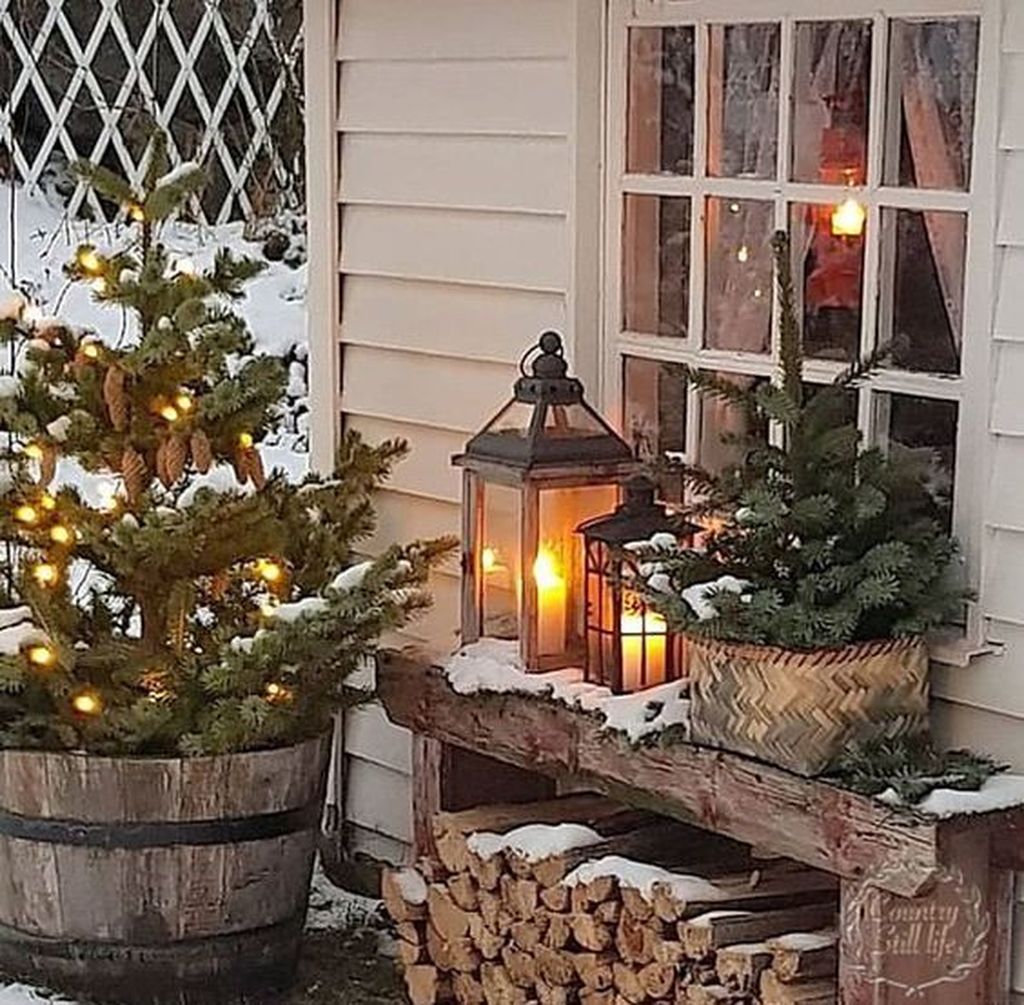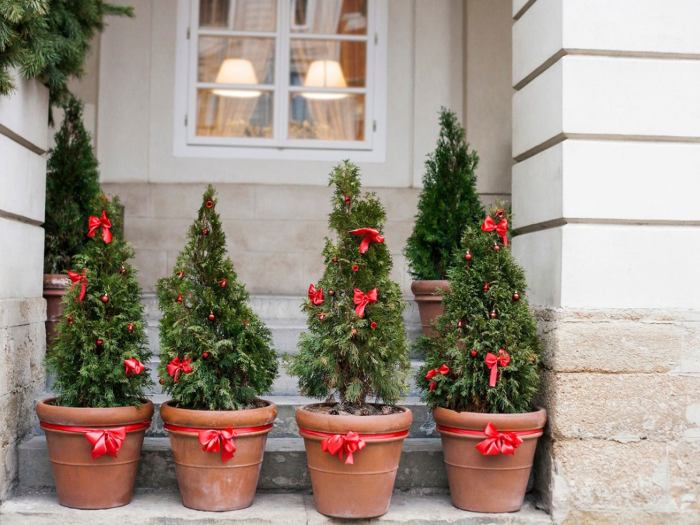As the winter season descends upon us, transforming our landscapes into a frosty wonderland, it’s time to bring the beauty of nature indoors. Winter porch plants offer a unique opportunity to enjoy the vibrancy of greenery amidst the chilly temperatures.
This guide will provide you with all the essential knowledge to select, care for, and create a captivating winter porch display that will brighten your home and uplift your spirits during the colder months.
From understanding the specific needs of winter-hardy plants to troubleshooting common problems, this comprehensive resource will empower you to create a thriving indoor oasis that will bring a touch of warmth and cheer to your winter days.
Types of Winter Porch Plants
Winter porch plants add a touch of greenery and cheer to your outdoor space during the cold months. Choosing the right plants for your porch is essential to ensure they thrive in the winter conditions.
Evergreens
- Conifers: These trees and shrubs, such as pines, firs, and spruces, retain their foliage year-round, providing a lush backdrop for your porch.
- Boxwood: A classic evergreen shrub with small, glossy leaves that can be shaped into various forms.
- Holly: A festive evergreen with spiky leaves and bright red berries.
Broadleaf Evergreens
- Wintercreeper: A low-growing evergreen vine with small, glossy leaves that turn bronze in the winter.
- Nandina: A shrub with bamboo-like stems and attractive red foliage.
- Mahonia: A shrub with evergreen leaves and clusters of bright yellow flowers in the winter.
Deciduous Plants
- Japanese Maple: A deciduous tree with stunning foliage that turns vibrant shades of red, orange, and yellow in the fall.
- Witch Hazel: A shrub with unique, twisted branches and fragrant yellow flowers that bloom in the winter.
- Paperbark Maple: A deciduous tree with exfoliating bark that reveals vibrant orange and cinnamon colors.
Comparison of Winter Porch Plants
| Type | Characteristics | Requirements |
|---|---|---|
| Evergreens | Retain foliage year-round | Prefer well-drained soil, full to partial sun |
| Broadleaf Evergreens | Evergreen leaves with broad blades | Prefer moist, well-drained soil, partial to full shade |
| Deciduous Plants | Lose leaves in the fall | Tolerate a wide range of soil conditions, prefer full to partial sun |
Selecting the Right Plants
Choosing the right plants for your winter porch is essential for their health and longevity. Consider the following factors:
Light Conditions
- Determine the amount of sunlight your porch receives.
- Choose plants that can tolerate the available light levels.
- Plants that prefer bright light include: cyclamen, kalanchoe, and poinsettia.
- Plants that can tolerate low light include: peace lily, snake plant, and ZZ plant.
Temperature
- Consider the temperature range on your porch.
- Choose plants that can withstand the coldest temperatures expected.
- Plants that prefer warm temperatures include: ferns, orchids, and succulents.
- Plants that can tolerate cold temperatures include: begonias, geraniums, and petunias.
Humidity
- The humidity level on your porch will affect plant selection.
- Choose plants that can tolerate the humidity level of your porch.
- Plants that prefer high humidity include: ferns, orchids, and mosses.
- Plants that can tolerate low humidity include: cacti, succulents, and begonias.
Finding Healthy Plants
- Inspect plants for pests or diseases before purchasing.
- Look for plants with healthy, green leaves.
- Avoid plants with yellow or brown leaves, wilted stems, or soft spots.
Caring for Winter Porch Plants
To ensure the well-being of your winter porch plants, specific care considerations must be taken. These include watering, fertilizing, and pruning needs, as well as protection from cold temperatures and pests.
Watering
During the winter months, water your plants sparingly. Allow the soil to dry out slightly between waterings to prevent root rot. Water deeply when you do water, ensuring that the water reaches all the roots.
Fertilizing
Fertilize your winter porch plants monthly during the winter months with a balanced fertilizer diluted to half strength. This will provide them with the nutrients they need to stay healthy and bloom.
Pruning
Prune your winter porch plants as needed to remove dead or damaged leaves and stems. Pruning will also help to encourage new growth and prevent the plants from becoming too leggy.
Protection from Cold Temperatures
If temperatures are expected to drop below freezing, protect your winter porch plants by bringing them indoors or covering them with a blanket or frost cloth. You can also use a heat lamp to provide additional warmth.
Protection from Pests
Winter porch plants can be susceptible to pests such as aphids, mealybugs, and spider mites. Inspect your plants regularly for signs of pests and treat them accordingly.
Creating a Winter Porch Display
Transform your porch into a winter wonderland with a captivating display of plants. Utilize containers in various sizes, shapes, and textures to create a dynamic display. Incorporate trellises to add height and dimension, allowing plants to climb and showcase their foliage.
When selecting containers, consider materials like wood, metal, or ceramic that complement the architectural style of your porch. Choose plants with contrasting colors, textures, and heights to create a visually appealing arrangement. Group similar plants together for a cohesive look, or mix and match for a more eclectic display.
Decorative Elements
Enhance your winter porch display with decorative elements that add charm and interest. Consider incorporating fairy lights or lanterns for a festive touch. Arrange cozy throws and pillows on outdoor furniture to create a welcoming and inviting atmosphere.
Accessorize with seasonal accents such as pinecones, holly berries, or winter-themed ornaments. These elements will add a touch of holiday cheer and make your porch a festive retreat during the colder months.
Troubleshooting Common Problems
Growing winter porch plants can be rewarding, but it’s not without its challenges. Here are some common problems and solutions to help keep your plants healthy and thriving:
-
Yellowing Leaves
Yellowing leaves can indicate several issues, including:
- Overwatering: Overwatering can suffocate roots, leading to yellowing leaves. Check the soil moisture and allow it to dry out between waterings.
- Underwatering: Insufficient water can also cause yellowing leaves. Make sure the soil is moist but not soggy.
- Nutrient deficiency: Yellowing leaves can be a sign of nutrient deficiency, especially nitrogen. Fertilize the plants regularly.
-
Brown or Dry Leaves
Brown or dry leaves can be caused by:
- Cold temperatures: Winter porch plants may be exposed to cold drafts or freezing temperatures, causing leaves to turn brown or dry.
- Low humidity: Dry air can cause leaves to lose moisture and become crispy. Increase humidity by misting the plants or using a humidifier.
- Pests: Pests, such as aphids or spider mites, can suck the sap from leaves, causing them to turn brown or dry.
-
Drooping Leaves
Drooping leaves can indicate:
- Overwatering: Excess water can weaken the stems, causing leaves to droop.
- Underwatering: Dehydrated plants will have wilted, drooping leaves.
- Root rot: Root rot, caused by overwatering or poor drainage, can weaken the roots and cause leaves to droop.
By understanding these common problems and implementing the recommended solutions, you can keep your winter porch plants healthy and enjoy their beauty throughout the cold season.
Summary
Embracing winter porch plants is not only a way to enhance your indoor space but also a therapeutic experience. Nurturing these resilient plants amidst the winter’s chill can bring a sense of accomplishment and joy. As you witness their vibrant foliage and delicate blooms thrive under your care, you’ll discover a newfound appreciation for the resilience of nature and the beauty that can be found even in the coldest of seasons.


